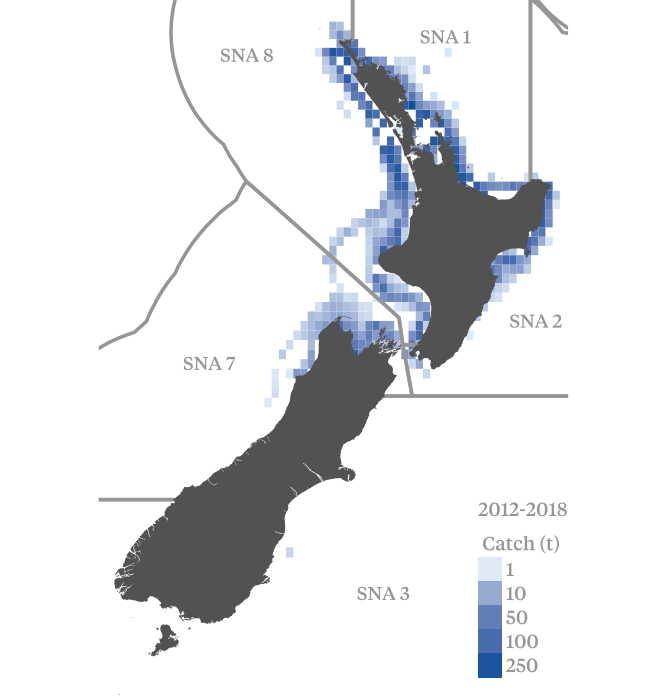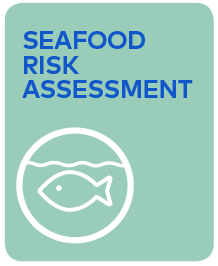Tamure, Bream, Schnapper, NZ Golden Snapper, Brim
The snapper fishery is one of the largest and most valuable coastal fisheries in New Zealand.
Snapper spawn in inshore areas and tend to live around reefs and rocky areas up to 200m in depth. They are found most prominently around the North Island (SNA 1 and SNA 8) and the top of the South Island (SNA 7). SNA 1 and SNA 8 encompass the main stocks, accounting for 88% of the total commercial catch in 2023-24.
Snapper are primarily harvested by trawl and longline gear. Most snapper taken in SNA 1 and 8, and some taken in SNA 7, is the declared target species, but some snapper is taken as a bycatch in a variety of inshore trawl and line fisheries.
The snapper fishery is the largest recreational fishery in New Zealand, with recreational harvests accounting for over 40% of the total catch. Snapper also form important fisheries for customary purposes, but the annual catch is not known.
Snapper is managed by Fisheries New Zealand (FNZ) using the Quota Management System (QMS).
The risk assessment for snapper is currently under review.
The risk assessment framework is used to assess the relative environmental risks of Australian and New Zealand wild-caught fisheries on fish stocks and the aquatic environment.
Assessments are undertaken for each species according to multiple ‘units of assessment’ (UoAs). The UoA is a combination of target species/stock and the gear type used by the fishery. Each UoA is assessed against three components for target species, bycatch and ecosystems, and management systems. Each component has a number of performance indicators, which have associated criteria, scoring issues, and scoring guideposts. For each UoA, each performance indicator is assigned a risk score according to how well the fishery performs against the scoring guideposts.
The risk assessment framework is currently under review and new risk assessments will be available soon.


Risk Assessment Summary

The risk assessment for snapper is currently under review.
